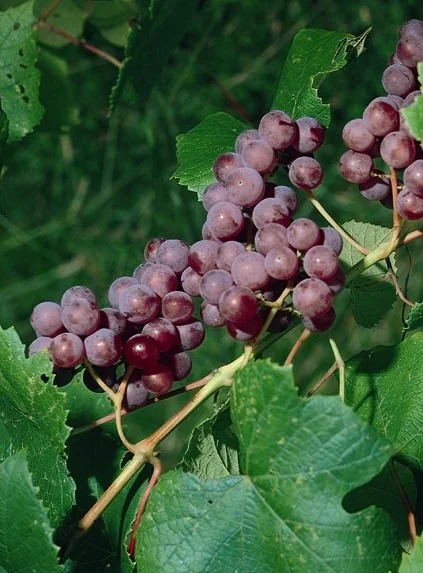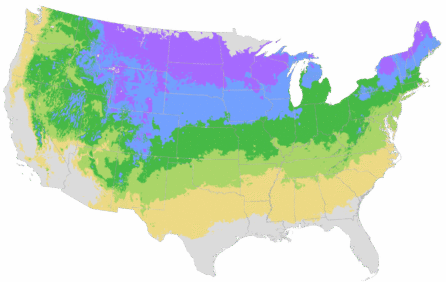You're growing in this Zip Code:
Change LocationDiscover Plants for Your Area
Catawba Grape
Vitis labrusca 'Catawba'
Retailers Near You
No Retailers found within 100 miles of your zipcode
Be Inspired: How to Use this Plant
| Bloom Time | Inconspicuous; prized for fruit and foliage. |
|---|---|
| Deciduous/Evergreen | Deciduous |
| Special Features | Fall Color, Showy Fruit, Waterwise, Edible, Fast Growing, Benefits Birds |
| Growth Rate | Fast |
| Growth Habit | Climbing |
| Landscape Use | Espalier, Privacy Screen |
| Design Ideas | Grapes can grow wherever there is direct sun and sufficient air circulation. They're traditionally trained overhead onto shade arbors over outdoor living spaces. Also popular for training along fence lines and up over arbor gateways. May be cultivated on standard wire trellis used in commercial vineyards. |
| Flower Color | Green |
| Foliage Color | Green |
| Companion Plants | Blackberry (Rubus); Rosemary (Rosmarinus); Fig (Ficus); Lavender (Lavandula); Rose (Rosa) |
| Care Instructions | Easily grown in deep, loamy, humus-rich, well-drained soil, but quite adaptable. Water deeply, regularly in first growing season to establish root system; once established, reduce frequency. Fertilize every 6 to 8 weeks until midsummer. Provide trellis or arbor support. Prune annually in winter to control size. |
| Lore | It is believed that the European grape originated in Asia Minor, probably around Turkey, from a wild plant that produced small fruit. Over millennia it was selected for ever larger fruit to eventually produce the array of wine grapes cultivated today. |
| Bloom Time | Inconspicuous; prized for fruit and foliage. |
|---|---|
| Deciduous/Evergreen | Deciduous |
| Special Features | Fall Color, Showy Fruit, Waterwise, Edible, Fast Growing, Benefits Birds |
| Growth Rate | Fast |
| Growth Habit | Climbing |
Retailers Near You
No Retailers found within 100 miles of your zipcode
Retailers Near You
No Retailers found within 100 miles of your zipcode
Buy Online
We cannot currently ship this product to your zip code.
About Us
We have been pioneers and craftsmen in the art of growing plants for nearly
100 years. Since our founding in Southern California by Harry E. Rosedale, Sr.
in 1926, we have been absolutely dedicated and obsessed with quality.
We have been pioneers and craftsmen in the art of growing plants for nearly 100 years. Since our founding in Southern California by Harry E. Rosedale, Sr. in 1926, we have been absolutely dedicated and obsessed with quality.





